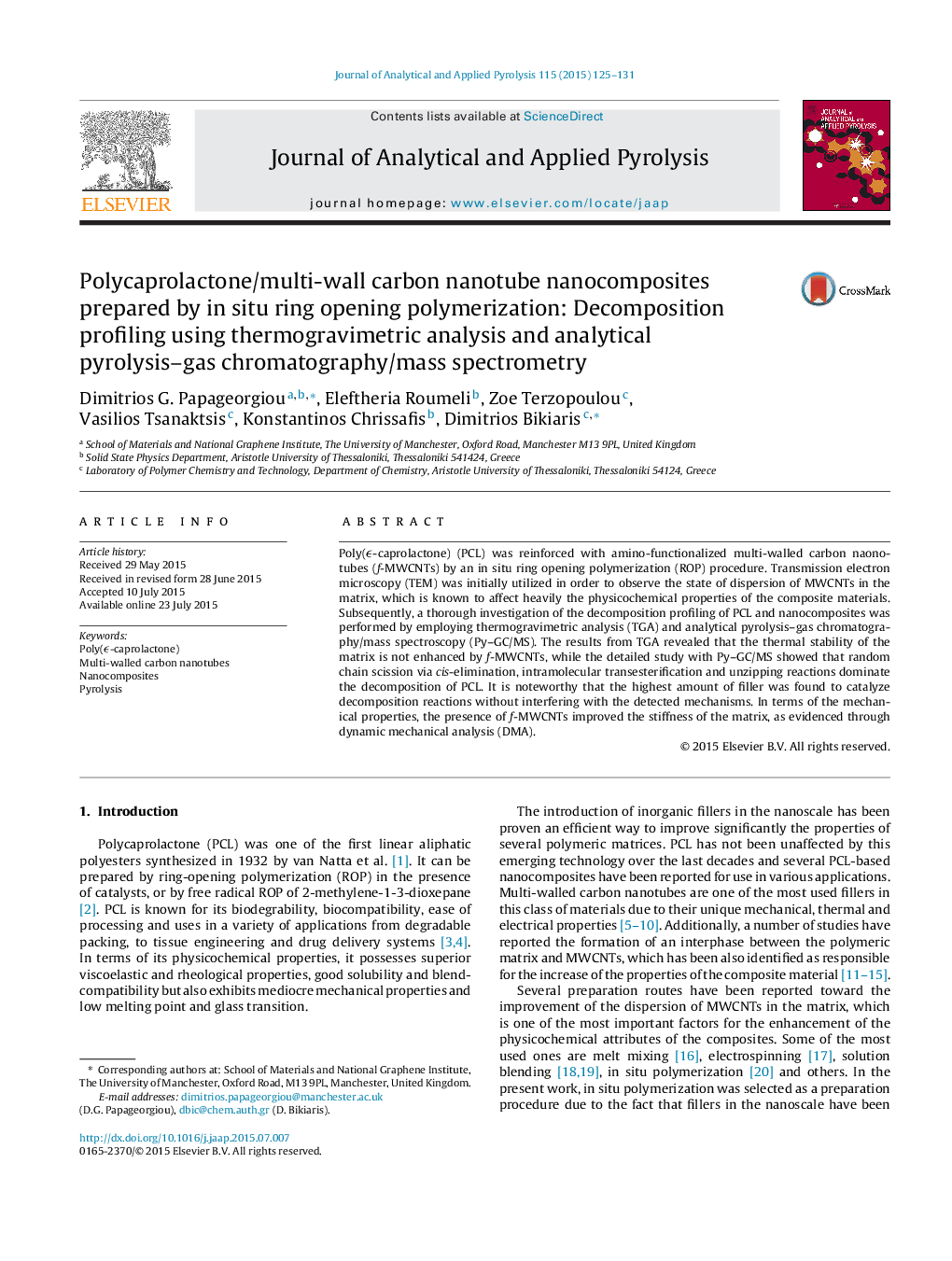| Article ID | Journal | Published Year | Pages | File Type |
|---|---|---|---|---|
| 1197085 | Journal of Analytical and Applied Pyrolysis | 2015 | 7 Pages |
•PCL/f-MWCNTs nanocomposites were prepared by in situ ring opening polymerization.•f-MWCNTs were well dispersed at low filler content.•The presence of fillers did not enhance the thermal stability of the nanocomposites.•f-MWCNTs accelerated the evolution of gaseous products.•The fillers did not interfere with the complicated decomposition mechanism of PCL.
Poly(ϵ-caprolactone) (PCL) was reinforced with amino-functionalized multi-walled carbon naonotubes (f-MWCNTs) by an in situ ring opening polymerization (ROP) procedure. Transmission electron microscopy (TEM) was initially utilized in order to observe the state of dispersion of MWCNTs in the matrix, which is known to affect heavily the physicochemical properties of the composite materials. Subsequently, a thorough investigation of the decomposition profiling of PCL and nanocomposites was performed by employing thermogravimetric analysis (TGA) and analytical pyrolysis–gas chromatography/mass spectroscopy (Py–GC/MS). The results from TGA revealed that the thermal stability of the matrix is not enhanced by f-MWCNTs, while the detailed study with Py–GC/MS showed that random chain scission via cis-elimination, intramolecular transesterification and unzipping reactions dominate the decomposition of PCL. It is noteworthy that the highest amount of filler was found to catalyze decomposition reactions without interfering with the detected mechanisms. In terms of the mechanical properties, the presence of f-MWCNTs improved the stiffness of the matrix, as evidenced through dynamic mechanical analysis (DMA).
